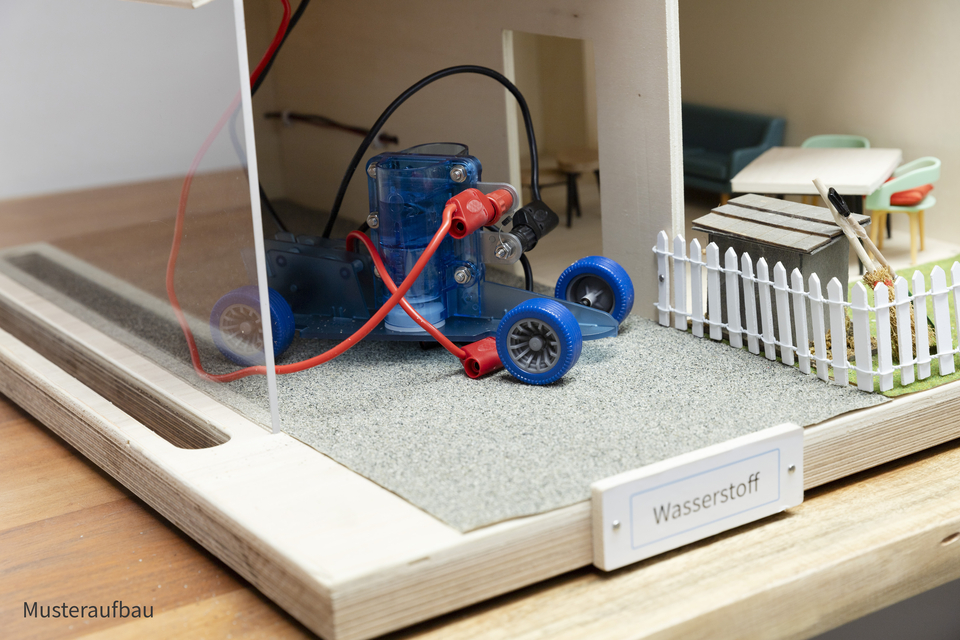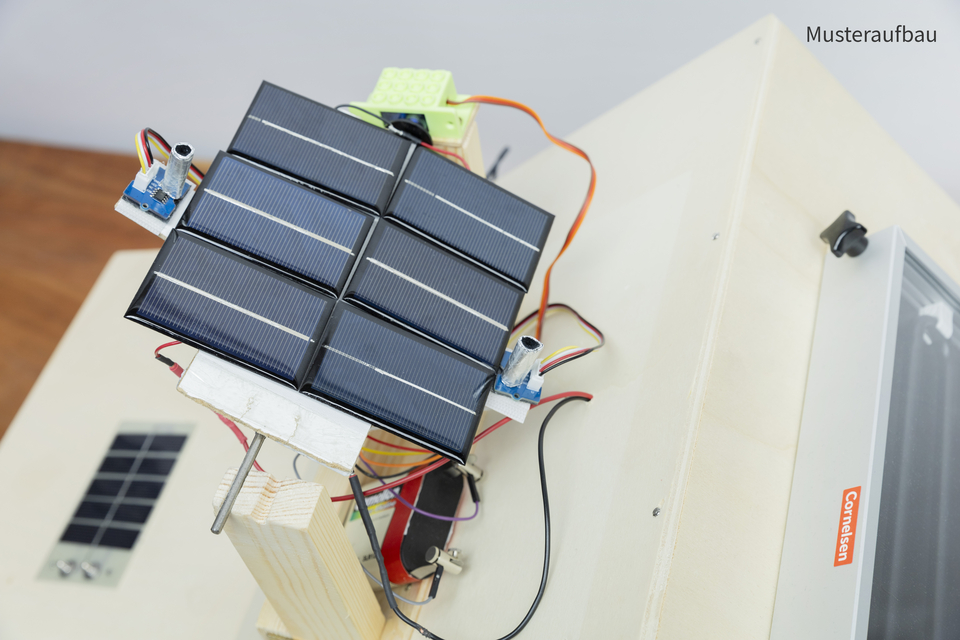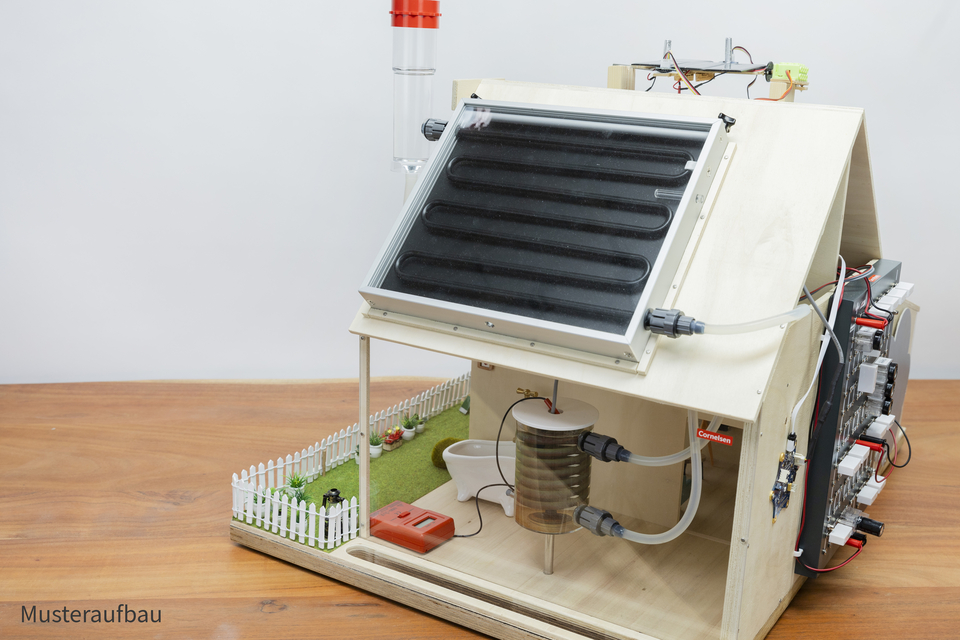Green Energy House: Hands-On Experience with Photovoltaics and Solar Thermal Energy
DIY Solar Energy Experiment Kit for Schools
The Green Energy House is a highly relevant concept. It brings together many issues relating to climate change and energy conversion, making them clear and understandable for students from grade 5 onwards.
Your students can explore energy requirements, energy sources, and energy conversion in a very practical way under one roof. The aspects of utilizing solar energy are already intensively focused on during assembly. When the car starts moving, the lamp lights up, and the water heats up, all students will realize what is possible with solar energy. Please note that the house shown in the video is not included.
For each topic (mobility, solar thermal energy, and solar power) there is experimental material for a separate station. A comprehensive handout is included. It contains information on all three stations, tasks and experiments based on the curriculum, as well as didactic and methodological information.
There are 2 options for purchasing the materials: as a material set with all 3 stations, or each station separately.
Material set (including all three stations as listed below):
Green Energy House: Art. No. 11500
Stations that can be purchased separately:
- Mobility: Art. No. 11510
- Solar power: Art. No. 11520
- Solar thermal energy: Art. No. 11530
If you would like to purchase the necessary material to equip a DIY Green Energy House, please contact us at international@cornelsen-experimenta.de.
Mobility / fuel cell car (11510)

Fuel cell car on the topic of mobility
The fuel cell car kit contains the car with fuel cell and all other experimental materials that are needed. All you need to add is distilled water.
Solar power / Sun follower (11520)

Photovoltaic module with sun follower for solar power
This station focuses on two aspects: the surface area of the solar cells (solar power) and the optimal angle of the sun's rays (sun follower) . The solar power is used for lamps and fans, for example. Additional consumers in the house can be added individually.
Light is usually only needed when the sun is not shining. How can this be regulated? Circuit, control and storage are being investigated from many sides. Among other things, the efficiency of using solar power is being measured and improvements are being discussed. This is where the sun follower can come into play. It aligns the solar modules towards the sun. This requires bright minds, sensors and a little programming.
Solar thermal energy / Hot water (11530)

Solar module for hot water preparation
How can solar energy be used to provide hot water for heating and showers? Station 3 is all about solar thermal energy. Step by step, the students follow the principle of energy supply from solar heat. The sun heats the solar collector, which is filled with liquid. The heated liquid circulates through a heat exchanger. There, the water is heated, which is used for the heating system or the hot water supply. Here, too, measurements are taken, data is analysed and connections are being made by the students.
Solar collector, heat exchanger tank, pump and all connection and other necessary materials are included in the DIY experiment kit.
Further information and tips
For all stations, the experiments work excellently with "real" sunlight. However, the sun doesn`t always shine brightly at the planned time. We therefore recommend a 75 W reflector lamp. This power is sufficient to operate the solar cells and modules to be installed in the house.
Now unleash your creativity. Build a suitable house with your students into which you can integrate the stations. Alternatively, there are also suitable DIY dollhouses made of wood. We recommend dimensions of approx. 60 x 50 x 50 cm (W x H x D).
And now it's your turn! Build your own Green Energy House!
By the way, the Green Energy House has already inspired many schoolgirls in workshops at Girls'Day 2023 at the Federal Chancellery in Germany.